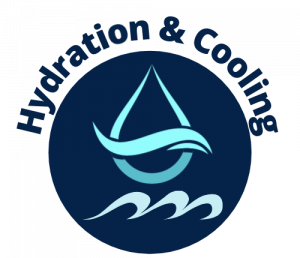A comprehensive step-by-step guide for properly sanitizing portable hydration stations and water systems for sports teams, ensuring athlete health and equipment longevity.
_______________________________
Sanitizing Portable Hydration Stations: Complete Guide for Athletic Programs
Proper sanitation of your team’s hydration equipment isn’t just about cleanliness—it’s about athlete health, performance, and equipment longevity. When multiple players share the same water sources during intense practices and games, portable hydration stations can quickly become breeding grounds for bacteria and germs. This guide walks you through the essential steps to keep your portable hydration systems clean and safe, whether you’re managing football hydration stations, team water tankers, or portable cooling systems.
Why Sanitizing Your Hydration Equipment Matters
Athletic teams sharing hydration equipment face unique challenges. Sweat, saliva, and environmental contaminants can accumulate quickly, potentially leading to illness spread among team members. A proper cleaning routine:
Prevents the spread of common illnesses and infections among athletes
Extends the life of your hydration equipment by preventing mineral buildup and component damage
Ensures water tastes fresh and clean, encouraging proper hydration
Meets health department standards for shared drinking equipment
Essential Supplies for Effective Sanitization
Before starting your cleaning process, gather these supplies to ensure thorough sanitization:
Dish soap (mild, unscented variety)
White vinegar or hydrogen peroxide
Baking soda
Bottle brushes in various sizes (including one with a long handle)
Clean microfiber cloths
Rubber gloves
Fresh water source
FDA-approved sanitizing solution for food-contact surfaces
Step-by-Step Sanitization Process
Daily Quick-Clean Protocol (After Each Use)
Drain all remaining water from tanks, hoses, and nozzles
Rinse the entire system with clean, warm water
Wipe down external surfaces with a clean, damp cloth
Allow all components to air dry completely before storing
Store with drain plugs open and lids off to prevent moisture trapping
Weekly Deep Cleaning Process
Completely disassemble your portable hydration station, including removing hoses, nozzles, and any detachable parts
Prepare a solution of warm water and mild dish soap
Using brushes appropriate for each component size, scrub all surfaces thoroughly, paying special attention to nozzles, spigots, and connection points
For stubborn mineral deposits, create a paste using baking soda and water and apply to affected areas, letting it sit for 15 minutes before scrubbing
Rinse all components thoroughly with clean water, ensuring no soap residue remains
Create a sanitizing solution using 1 tablespoon of unscented bleach per gallon of water (or use a commercial food-grade sanitizer following product instructions)
Allow sanitizing solution to contact all surfaces for at least 5 minutes
Rinse thoroughly again with clean water
Allow all components to air dry completely on a clean surface
Tackling Persistent Odors and Stains
If your hydration station develops stubborn odors or staining despite regular cleaning:
Fill the tank with a solution of 1 cup white vinegar to 1 gallon of water
Let this solution sit in the tank and run some through all hoses and nozzles
Allow to sit for 30 minutes (but not overnight as vinegar can eventually damage some components)
Drain and rinse thoroughly with clean water several times until all vinegar smell is gone
For persistent biofilm in hoses, replace them entirely – they’re relatively inexpensive compared to the health risks of contaminated water
Maintenance Tips for Specific Hydration Equipment
Multiple-Player Hydration Stations
Pay special attention to individual drinking nozzles, which can harbor the most bacteria
Check and clean backflow prevention valves regularly
Inspect connection points where bacteria can hide in small crevices
Water Carts and Tankers
Ensure complete drainage after each use – stagnant water in tanks is a primary source of contamination
Check wheels and undercarriage for mud and debris that could splash into drinking water
Routinely inspect spigots for mineral buildup that can harbor bacteria
Combination Cooling and Hydration Systems
Clean misting components separately from drinking water components
Check for cross-contamination points between systems
Ensure electrical components are protected during cleaning
Creating a Sanitation Schedule and Accountability System
Develop a written cleaning schedule with sign-offs for daily, weekly, and monthly maintenance tasks
Assign specific team members or staff responsible for each cleaning task
Keep a maintenance log with the equipment to track cleaning history
Include visual inspection checkpoints to catch issues early
Emergency Sanitization Protocol
If illness spreads through your team or you suspect contamination:
Immediately remove all hydration equipment from service
Perform a complete deep clean and sanitization
Consider using commercial sanitizing services for severe cases
Replace any components that cannot be thoroughly sanitized
Keep Your Team Healthy With Properly Maintained Hydration Systems
At Hydration & Cooling, we’re committed to helping athletic programs maintain safe, clean hydration systems that support peak performance. Our portable hydration stations are designed with cleanability in mind, featuring smooth surfaces, easy-to-access components, and materials that resist bacterial growth. We also provide valuable resources, including sports hydration tips for athletes, to ensure they understand the importance of staying properly hydrated during training and competitions. By educating athletes on optimal hydration strategies, we empower them to enhance their performance and reduce the risk of dehydration. Our dedication extends beyond just equipment; we aim to foster a culture of health and wellness within athletic communities.
Need help establishing an effective cleaning routine? Have questions about sanitizing your specific equipment? Our team of hydration experts is ready to help.
Reach Out for Expert Guidance
Call us at 828-820-8600 or visit our Asheville showroom to discuss your team’s hydration and sanitation needs. When life gets hot, we do cool – and clean!
Ask about our maintenance kits specifically designed for athletic program hydration equipment, including specialized brushes, FDA-approved sanitizers, and replacement components.
